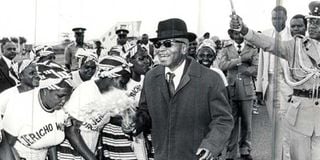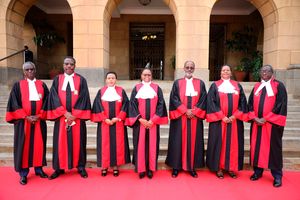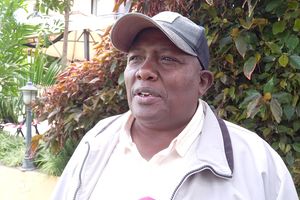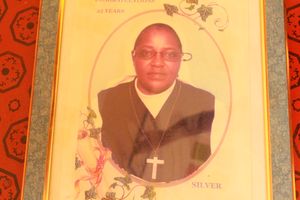Premium
‘Today in History’ should be short and sweet and, above all, accurate

Then-President of Malawi, Dr Hastings Kamuzu Banda (1966-1994), at JKIA in October 1982 while on a brief stopover on his way home from London.
Only readers know the trouble they have reading “Today in History”, which appears on the Letters to the Editor page. Introduced three years ago it’s a daily pictorial coverage of historically significant events.
The photo feature is supposed to be an engaging, compelling and delightful way of remembering our history. Many readers, however, find some of the offerings convoluted and tortuous. This is especially so when the photo used is of another event at a different time and space.
Mwiti Marete, the Editor, Opinion at Nation Media Group, who edits the relevant section in the Daily Nation as well, explained two years ago why photos taken at another event are used (See “‘Today in History’ tells the stories of our past through iconic images” by Peter Mwaura—Daily Nation, April 2, 2021).
Issues of historical significance, and accuracy, have compounded the problem. Regardless, “Today in History” has the potential of becoming a popular storytelling tool for “what happened on this day” in our history.
The main challenge is identifying historically significant events and presenting them in a manner that readers find effortlessly readable. “Today in History” should be short and sweet and provide readers with a talking point, not a lesson in history. Ideally, the text should not be more than three sentences.
Some of the items haven’t been historically significant, however. Or, to put it differently, there were other more important events on that day that should have been selected instead.
For example, the Saturday Nation of August 1, 2020, published the following item: “Kenya’s ambassador to the United States, Dr Benjamin Kipkorir (left), chats with Foreign Affairs Minister Kalonzo Musyoka during a break at the 11th bi-annual conference for Kenya’s Ambassadors and High Commissioners in Kwale on August 1, 1995.”
Not historically important
The conference for diplomats was not, relatively speaking, historically important. There was the August 1, 1982, attempted coup against President Daniel arap Moi that occurred on that day and was historically more significant. The Kipkorir-Musyoka tea break chit-chat and diplomats conference was the first instalment of the “Today in History” series. It should have set a high standard for historical relevance and significance.
Here’s another example of an event of doubtful historical significance: “October 10, 1995: The minister for Health, Joshua Angatia (left), is attended to by Dr Jack Nyamongo of the National Public Health Laboratories after donating blood in Nairobi” (Saturday Nation, October 10, 2020).
Innacuracies
But the most annoying and persistent problem has been inaccuracy. Nation readers Githaiga Kairu, Harrison Kinyanjui, Sammy Ade, Wilberforce Kimariech, GMT Ottieno, Stephen Ngure, and Edwin Otieno—to mention only a few—have pointed out errors in some of the photo features.
Last Friday’s “Today in History” sparked the loudest complaints on account of being inaccurate. It misidentified Bakili Muluzi, the president of Malawi from 1994-2004, as President Kamuzu Banda, the older man he defeated in 1994. The photo was taken at JKIA in June 1995, when Dr Muluzi stopped over on his way home from a visit to Kuwait. Dr Banda was not in the picture.
Edwin Otieno said he has been reading The Nation since he was “a baby”. He relies on the newspaper “to check the inaccuracies of bloggers”. But now the Nation “is itself guilty of inaccuracies”. He said he passes on his Nation to his children “to learn about our history and to help them in their exams” but “unfortunately you’ve let me down”.
Other readers, including a senior NMG management official, complained just as strongly. In view of the high-powered protests, the editors moved quickly to correct the error on page 2 of the following day’s Saturday Nation. I’m only sad past errors didn’t receive similar editorial attention. I call that discrimination in correcting errors. Errors are errors and should be corrected regardless of the station in the life of the complainant.
“Today in History” is compiled Monday to Friday by Nation librarian Anniel Njoka. His colleague Delvin Omwondo takes over on weekends. They have the difficult task of rummaging daily through the archives to find nuggets of information and images worth of the designation “Today in History”.
As non-journalists, they’re generally doing well and should be compensated for the effort outside their line of work. At any rate, they should be guided better on how to select and compile historically significant photo features. Otherwise, the exercise should be turned over to a journalist. But that has its downside; it would divert journalistic talent from news reporting to digging into archives.
The Public Editor is an independent news ombudsman who handles readers’ complaints on editorial matters including accuracy and journalistic standards. Email: [email protected]. Call or text 0721989264





